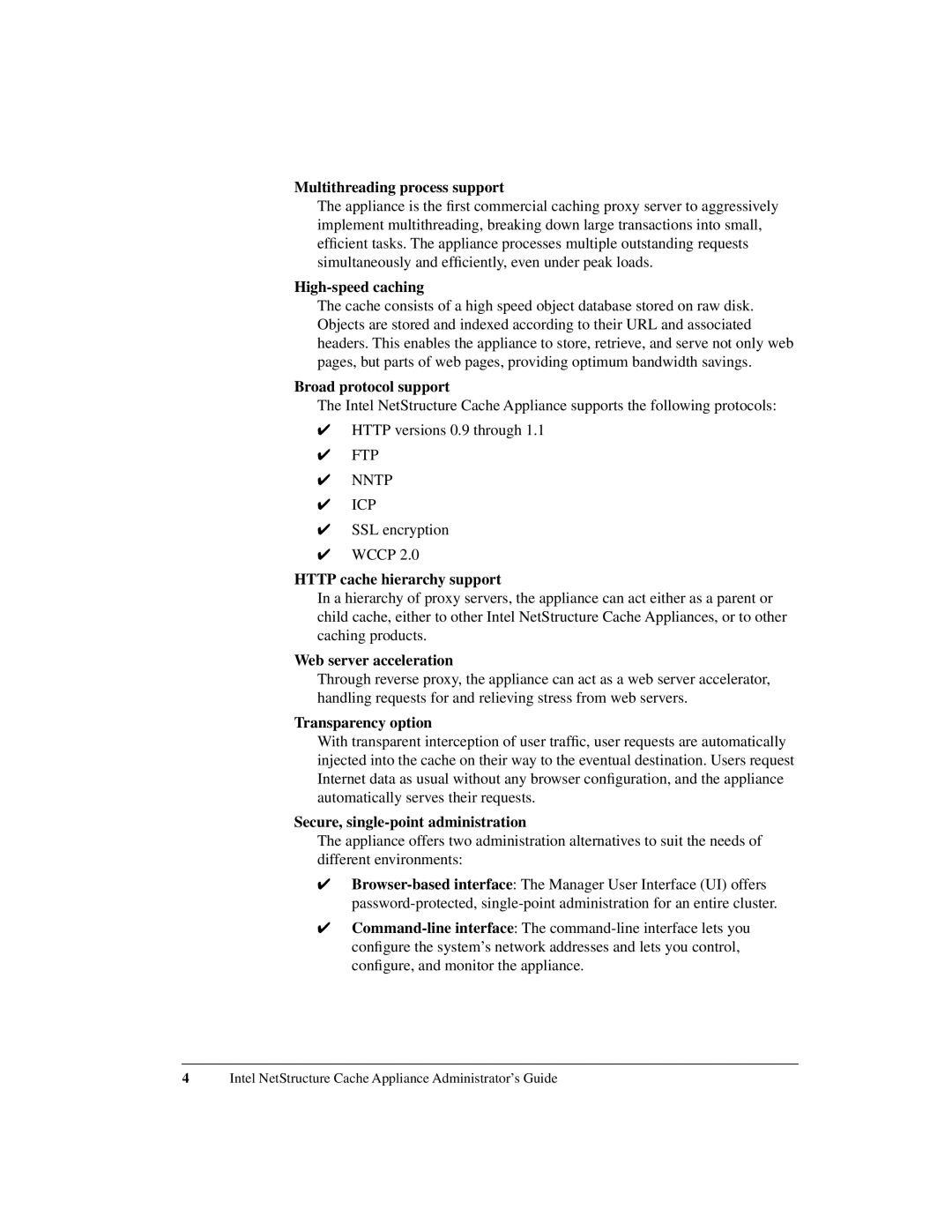Multithreading process support
The appliance is the first commercial caching proxy server to aggressively implement multithreading, breaking down large transactions into small, efficient tasks. The appliance processes multiple outstanding requests simultaneously and efficiently, even under peak loads.
High-speed caching
The cache consists of a high speed object database stored on raw disk. Objects are stored and indexed according to their URL and associated headers. This enables the appliance to store, retrieve, and serve not only web pages, but parts of web pages, providing optimum bandwidth savings.
Broad protocol support
The Intel NetStructure Cache Appliance supports the following protocols:
✔HTTP versions 0.9 through 1.1
✔FTP
✔NNTP
✔ICP
✔SSL encryption
✔WCCP 2.0
HTTP cache hierarchy support
In a hierarchy of proxy servers, the appliance can act either as a parent or child cache, either to other Intel NetStructure Cache Appliances, or to other caching products.
Web server acceleration
Through reverse proxy, the appliance can act as a web server accelerator, handling requests for and relieving stress from web servers.
Transparency option
With transparent interception of user traffic, user requests are automatically injected into the cache on their way to the eventual destination. Users request Internet data as usual without any browser configuration, and the appliance automatically serves their requests.
Secure, single-point administration
The appliance offers two administration alternatives to suit the needs of different environments:
✔
✔
4Intel NetStructure Cache Appliance Administrator’s Guide
